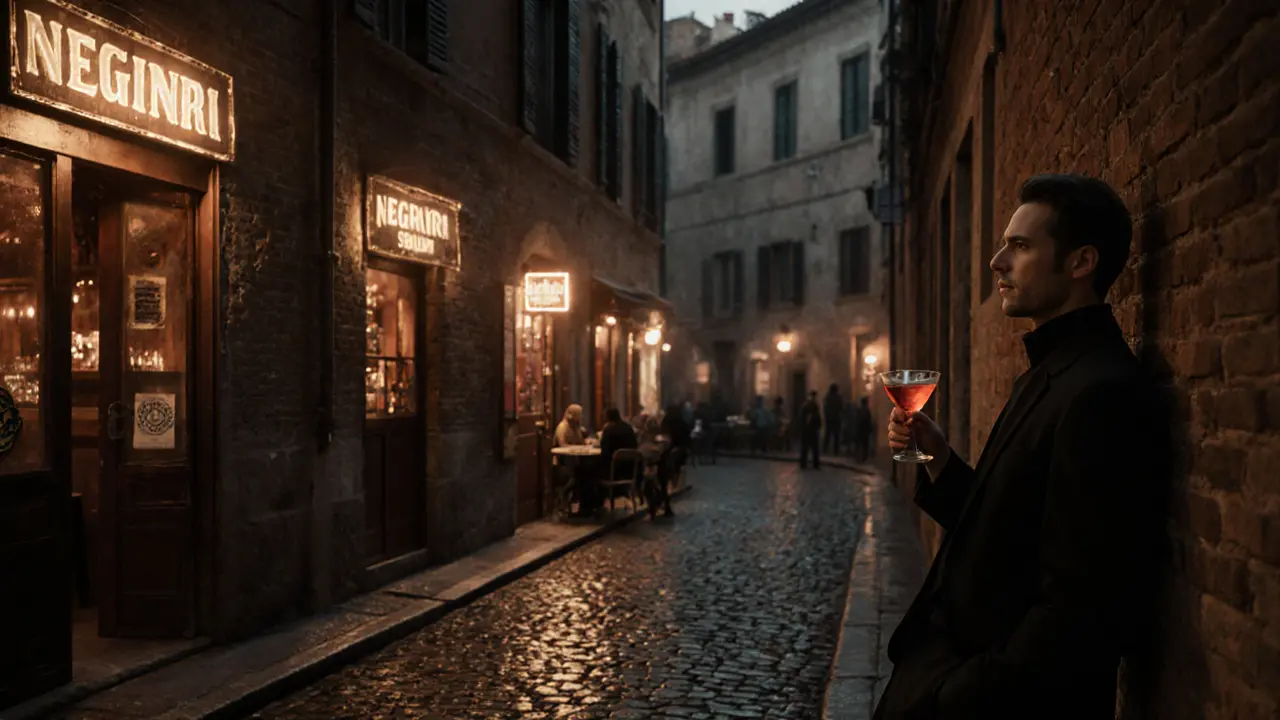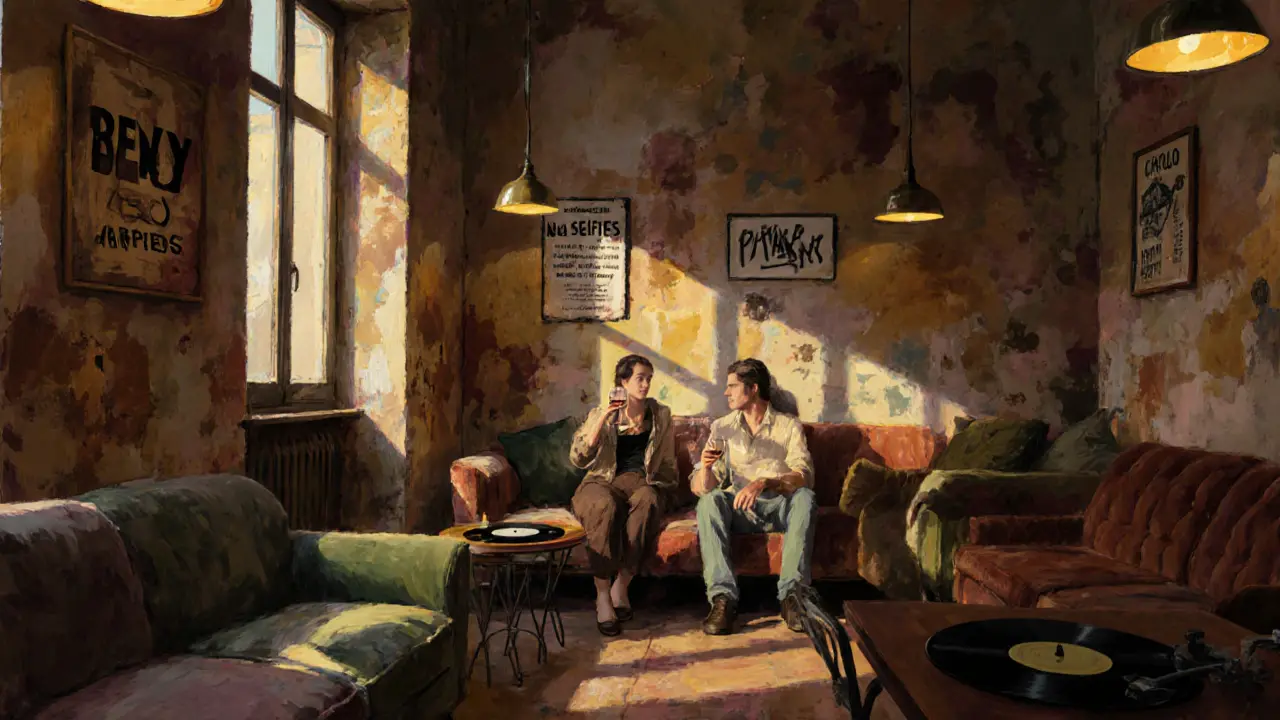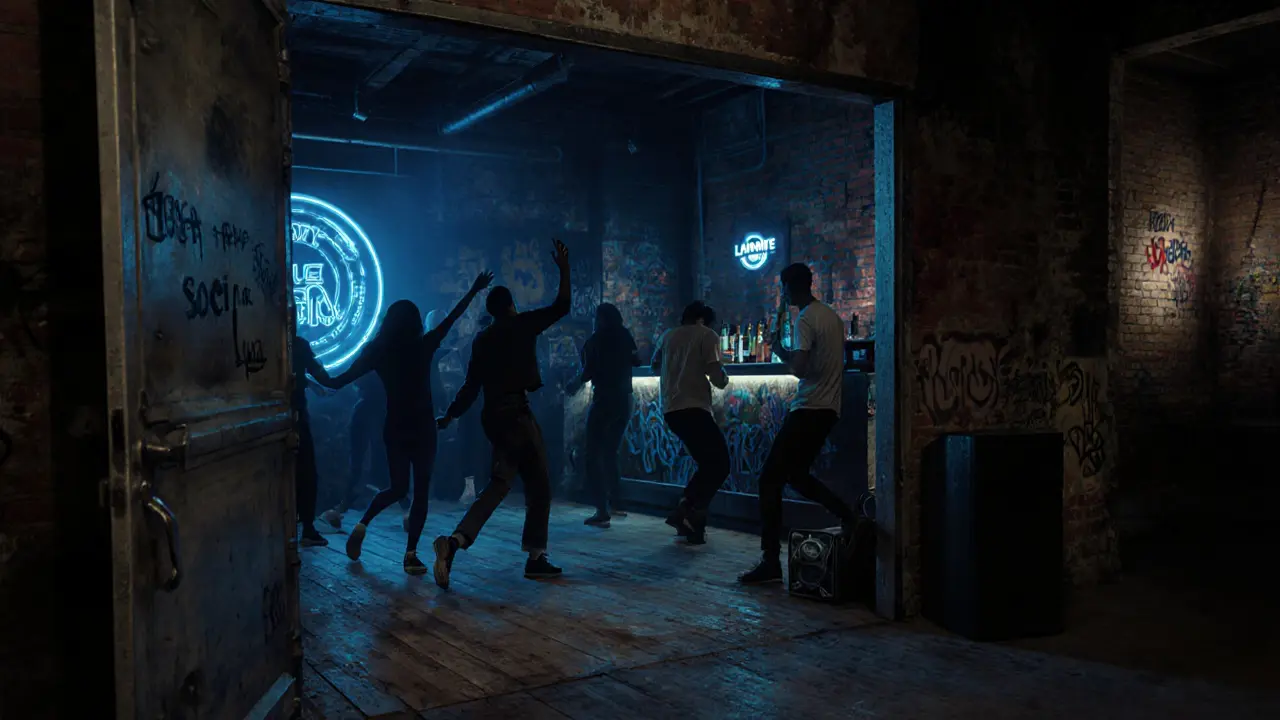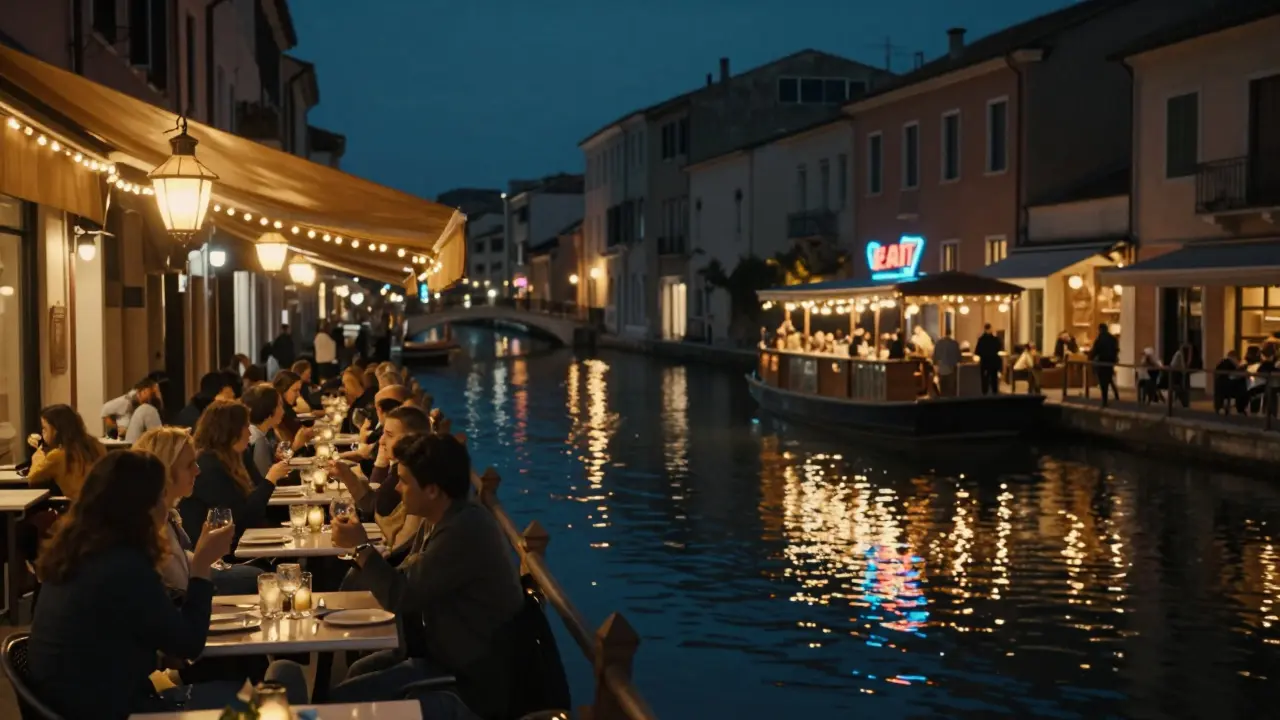Milan's Best Kept Secret: A Guide to the City's Top Nightlife Spots

Forget the fashion shows-Milan’s real magic happens after dark
Most tourists leave Milan by 8 p.m., thinking the city shuts down after dinner. They miss the pulse. The real Milan doesn’t start until midnight. You won’t find it in guidebooks or Instagram ads. It’s tucked behind unmarked doors, down alleyways near Porta Ticinese, and inside converted warehouses where the music thumps just loud enough to feel alive but not so loud you can’t talk to the person next to you.
Porta Ticinese: Where the locals go
If you want to know where Milanese people actually hang out, head to Porta Ticinese. This neighborhood isn’t flashy. No neon signs. No bouncers in suits. Just a stretch of cobblestone streets lined with tiny bars that have been around since the 90s. Start at Bar Basso, the birthplace of the Negroni Sbagliato. Order one. Sit at the counter. Watch the bartenders move like choreographed dancers. They’ve been making this drink the same way since 1982. No menu. Just ask. The crowd? Designers from nearby studios, students from Politecnico, and a few tourists who stumbled in by accident. That’s the point.
Walk five minutes down Via Tortona and you’ll hit Circolo degli Artisti. It’s not a club. It’s a former art studio turned into a dimly lit lounge with vinyl records spinning, mismatched sofas, and a bar that only serves wine by the glass. You’ll hear jazz one night, experimental electronica the next. No cover charge. No dress code. Just a sign that says "No selfies." And everyone obeys it.
Brera: The quiet cool
Brera looks like a postcard-cobblestones, Renaissance buildings, tiny boutiques. But after 10 p.m., it transforms. The galleries close. The cafes turn into wine bars. Cantina del Vino is the place. It’s tiny. Only 12 seats. You book ahead, or you wait. The owner, Marco, knows every bottle in the cellar. He’ll ask you what you’re in the mood for-bold? Light? Fruity? Then he pours you a taste of something you’ve never heard of. A rare Nebbiolo from Piedmont. A skin-contact white from Friuli. You don’t order wine here. You let someone else choose for you. And you’ll remember it.
Down the street, Bar Basso has a sister spot called Bar Luce. It’s not just a bar-it’s a set from a Wes Anderson film. Pastel walls, marble counters, retro stools. The cocktails are simple: gin, vermouth, a twist. But the vibe? Pure Milanese poetry. You’ll see couples sipping slowly, laughing low. No one’s trying to be seen. They’re just enjoying being there.

Isola: The underground heartbeat
Isola used to be an industrial zone. Now it’s where Milan’s creative class goes to unwind. This is the place for DJs who don’t care about fame. For DJs who play for the love of it. Lambrate Social Club is hidden inside a converted factory. The entrance is a steel door with no sign. You text a number for the code. Inside, the walls are painted black. The sound system is custom-built. The crowd? Artists, coders, musicians, students. Everyone’s in their 20s and 30s. No VIP section. No bottle service. Just a long bar, a dance floor made of reclaimed wood, and a DJ spinning underground techno or deep house until 5 a.m.
Walk a block over to Bar del Fico. It’s open until 3 a.m. and serves cheap, delicious street food-truffle arancini, porchetta sandwiches, fried zucchini flowers. You eat with your hands. You drink local beer from small breweries. You don’t come here for the ambiance. You come because the food tastes like it was made by someone’s nonna, and the beer was brewed just down the street.
Corso Como: The sleek secret
If you’re looking for something polished but not touristy, head to Corso Como. It’s not a nightclub. It’s a cultural hub. The building houses a design store, a restaurant, and a rooftop bar. The bar? Corso Como 10. You need to be on the guest list. No problem-just show up before 11 p.m. and ask. The staff knows who’s real. The view? The city lights spread out like a painting. The drinks? Crafted with Italian herbs, local citrus, and house-made syrups. The music? Curated by a local DJ collective. No EDM. No Top 40. Just smooth, soulful beats that make you want to dance, not just stare at your phone.
This isn’t a place to get drunk. It’s a place to feel something. To sit on the terrace, sip something expensive but subtle, and watch the city breathe. You’ll leave with a quiet buzz-not from alcohol, but from the feeling that you’ve found something real.
What to avoid
Stay away from the area around Piazza Duomo after 10 p.m. The bars there are overpriced, packed with tourists, and play the same three songs on loop. You’ll pay €18 for a gin and tonic that tastes like plastic. The bouncers are rude. The music is loud enough to give you a headache. This isn’t Milan. This is a theme park version of Milan.
Also skip the clubs that advertise "VIP tables" with Instagram influencers. They’re not for locals. They’re for people who think nightlife is about being seen. Milan doesn’t work that way. Here, the best nights are the ones you don’t post about.

How to blend in
Don’t wear sneakers with socks. Don’t wear baseball caps inside. Don’t speak loudly on your phone. Milanese people dress well-not because they’re rich, but because they care. You don’t need a designer suit. But a clean jacket, dark jeans, and decent shoes will get you further than a hoodie and flip-flops.
Learn to say "Grazie" and "Per favore." Smile. Don’t rush. Milan moves at its own pace. The best bars don’t rush you out. They want you to stay. To talk. To listen. To feel the night.
When to go
Weekends are crowded, but not impossible. The real magic happens on weekdays-Tuesday to Thursday. The locals are off work. The bars are quieter. The DJs are more experimental. You’ll get better service. Better drinks. Better vibes. And you’ll actually have a conversation with someone who’s lived here their whole life.
Start late. Dinner isn’t over until 9:30 p.m. Bars don’t fill up until 11. Clubs don’t get going until midnight. If you’re there before 10, you’re not ready yet.
Final tip: Trust your gut
If a place feels forced, leave. If the music feels generic, leave. If the bartender doesn’t look you in the eye, leave. The best spots in Milan don’t advertise. They whisper. They wait. They let you find them.
Walk down a street you’ve never seen. Turn a corner. See a door with no sign. Knock. Ask if it’s open. If the answer is yes, you’re already in the right place.
What’s the best time to start a night out in Milan?
Don’t start before 9:30 p.m. Most Milanese eat dinner late-between 8 and 10 p.m. Bars don’t get lively until after 11 p.m., and clubs really come alive after midnight. If you show up at 8 p.m., you’ll be the only one there. Wait until the city wakes up.
Is Milan nightlife expensive?
It depends. In tourist zones like Duomo, you’ll pay €15-€20 for a cocktail. But in Porta Ticinese or Isola, you can get a great wine for €6-€8 and a craft beer for €5. Some bars, like Circolo degli Artisti, don’t even charge cover. The key is knowing where to go. The best places aren’t the most expensive.
Do I need to make reservations?
For small spots like Cantina del Vino or Bar Luce, yes-book a table a day ahead. For bars like Bar Basso or Lambrate Social Club, no. Just show up before 11 p.m. For rooftop spots like Corso Como 10, you’ll need to be on a guest list. Call ahead or ask at the door. Most places are welcoming if you’re polite and respectful.
Is Milan nightlife safe at night?
Yes, especially in areas like Porta Ticinese, Brera, and Isola. These neighborhoods are well-lit, walkable, and patrolled. Avoid isolated alleys after 2 a.m., but stick to the main streets. Public transport runs until 1:30 a.m., and taxis are easy to find. Just don’t wander into unknown areas just because they look "edgy."
What should I wear to Milan’s nightlife?
Dress smart-casual. Clean jeans, a button-down shirt or a nice top, and closed shoes. No shorts, flip-flops, or sportswear. Milanese people dress with care-not to show off, but to show respect. You don’t need a suit. But you do need to look like you tried. It’s not about money. It’s about attention to detail.

